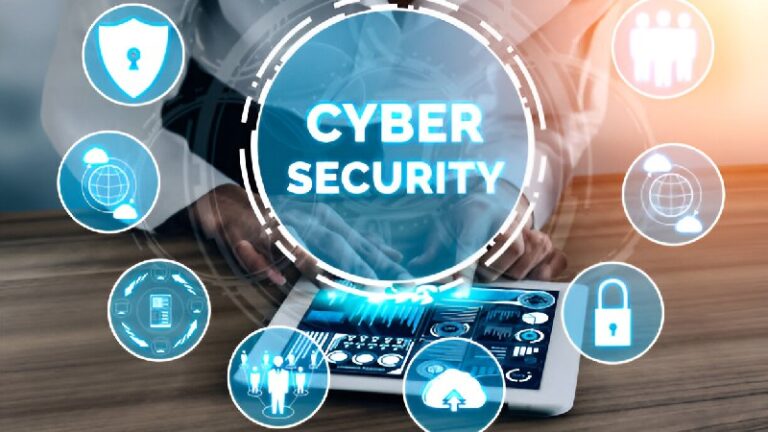The digital landscape of 2025 promises unprecedented connectivity and convenience, but it also heralds a sophisticated evolution in cyber threats. While technological defenses like firewalls and antivirus software remain crucial, the frontier of cybersecurity in 2025 is increasingly shifting towards exploiting the human element.
Attackers are becoming masters of manipulation, leveraging our inherent trust, cognitive biases, and the blurring boundaries of our online lives to gain access and inflict harm. Understanding these emerging, human-centric threats is paramount for building a resilient digital life.
Why Humans Are the New Target?
The sophistication of technical defenses has inadvertently pushed cybercriminals to focus on the weakest link: us. In 2025, expect to see a surge in attacks that exploit human psychology and social dynamics. This shift is driven by several factors:
- Evolving Technical Defenses: As organizations and individuals adopt stronger technical safeguards, directly breaching systems becomes more challenging and resource-intensive for attackers.
- The Power of Social Engineering: Manipulating human behavior through tactics like phishing, pretexting, and baiting offers a more direct and often more successful route to gaining access to sensitive information and systems.
- The Blurring of Personal and Professional: With remote work and constant connectivity, the lines between our personal and professional digital lives are increasingly blurred, creating more opportunities for attackers to exploit vulnerabilities across these domains.
- Exploiting Cognitive Biases: Cybercriminals are adept at leveraging our inherent cognitive biases, such as the tendency to trust authority (pretexting as a known entity) or the fear of missing out (FOMO in phishing scams), to lower our defenses.
Emerging Human-Centric Threats to Watch in Cybersecurity in 2025
To effectively protect ourselves, we need to be aware of the specific human-centric threats that are likely to dominate the cybersecurity in 2025 landscape:
- Advanced Social Engineering Attacks: Expect more sophisticated and personalized phishing campaigns that leverage deepfake technology (audio and video) to impersonate trusted individuals, making them incredibly difficult to detect.
- Business Email Compromise (BEC) Evolution: BEC attacks will become more nuanced, targeting not just financial transfers but also the manipulation of sensitive data and supply chain processes through human interaction.
- AI-Powered Disinformation Campaigns: Artificial intelligence will be used to create highly realistic and persuasive disinformation campaigns aimed at manipulating public opinion, influencing financial markets, or even inciting social unrest. Recognizing manipulated content will be a key cybersecurity challenge.
- Hybrid Attacks: The convergence of technical exploits with social engineering tactics will become more prevalent. For example, a seemingly legitimate software update might be bundled with malware delivered through a convincing social engineering lure.
- Insider Threats (Intentional and Unintentional): As work environments evolve, both malicious insiders and employees making unintentional errors due to lack of awareness will continue to be significant vulnerabilities.
Actionable Steps for Protection in 2025
Fortifying your human firewall requires a proactive and multi-faceted approach that focuses on awareness, critical thinking, and behavioral changes. Here are key strategies to implement for robust cybersecurity in 2025:
- Cultivate Skepticism and Verify: Adopt a “trust no one, verify everything” mindset. Be highly suspicious of unsolicited communications, especially those requesting sensitive information or urgent action. Independently verify the legitimacy of requests through official channels.
- Master Multi-Factor Authentication (MFA): Enable MFA on all your critical accounts. This adds an extra layer of security that even sophisticated social engineering attacks will struggle to bypass.
- Educate Yourself Continuously: Stay informed about the latest social engineering tactics and cybersecurity threats. Regularly update your knowledge through reputable sources and training programs.
- Practice Strong Password Hygiene: Use strong, unique passwords for each account and consider using a password manager. Be wary of password reuse, which significantly increases your vulnerability.
- Be Mindful of Your Digital Footprint: Understand the information you share online, both publicly and privately. Attackers can use this information to craft more convincing social engineering attacks.
- Secure Your Home Network: With the blurring of personal and professional lives, ensure your home network is secure with a strong Wi-Fi password and updated router firmware.
- Recognize and Report Suspicious Activity: Develop the ability to recognize red flags in digital communications and know how to report suspicious activity to the appropriate authorities or your organization’s security team.
- Embrace a Security-First Culture: Whether at home or work, foster a culture where cybersecurity is a shared responsibility and security best practices are consistently followed.
Building Your Human Firewall for Cybersecurity in 2025
| Layer of Defense | Actionable Strategies |
| Awareness & Education | Continuous learning about emerging threats, recognizing social engineering tactics, understanding the impact of your digital footprint. |
| Critical Thinking | Cultivating skepticism, verifying requests independently, resisting urgency and emotional appeals in communications. |
| Behavioral Changes | Practicing strong password hygiene, enabling MFA, securing your home network, reporting suspicious activity promptly. |
| Culture & Mindset | Adopting a “trust no one, verify everything” mentality, embracing security as a shared responsibility. |
Conclusion
The landscape of cybersecurity in 2025 demands a paradigm shift in our approach to protection. While technology remains vital, the human element will be the critical battleground. By understanding the evolving, human-centric threats and actively building our “human firewall” through awareness, critical thinking, and proactive behavioral changes, we can navigate the digital world with greater resilience and safeguard our increasingly interconnected lives. The key to effective cybersecurity in 2025 lies not just in the strength of our technology, but in the vigilance and informed actions of each individual user.
FAQs
Why is human behavior becoming a primary focus in cybersecurity threats for 2025?
As technical defenses improve, attackers are increasingly exploiting human psychology and social dynamics through tactics like social engineering to gain access.
What are some key human-centric cybersecurity threats to be aware of in 2025?
Advanced social engineering attacks, BEC evolution, AI-powered disinformation, hybrid attacks, and insider threats (intentional and unintentional).
What is a “human firewall,” and why is it important for cybersecurity in 2025?
The “human firewall” refers to our ability to protect ourselves through awareness, critical thinking, and behavioral changes. It’s crucial because attackers are increasingly targeting human vulnerabilities.
What are some actionable steps I can take to strengthen my human firewall against cybersecurity threats in 2025?
Cultivate skepticism, verify requests, enable MFA, educate yourself continuously, practice strong password hygiene, and be mindful of your digital footprint.
How can I stay informed about the latest emerging cybersecurity threats in 2025?
Follow reputable cybersecurity news sources, attend webinars or training sessions, and be aware of alerts and advisories from trusted organizations.


